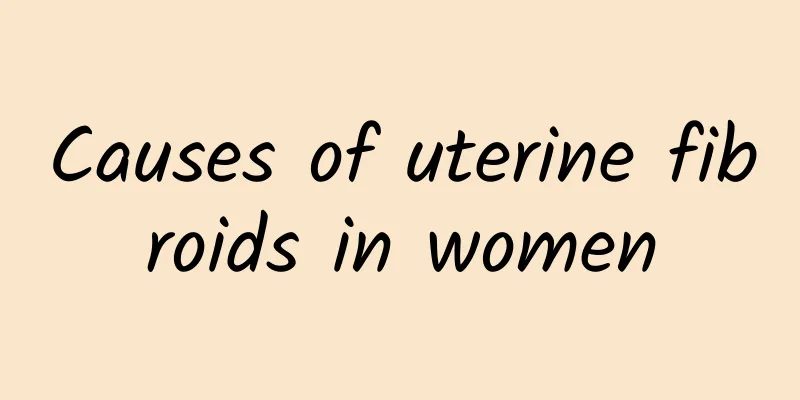How to treat uterine fibroids during pregnancy

|
The incidence of uterine fibroids is increasing, especially for women who have not given birth, have sexual dysfunction, or are depressed. Experts say that excessive hormone secretion is the most common cause of uterine fibroids. So how to treat uterine fibroids during pregnancy? How to treat uterine fibroids during pregnancy? The treatment of uterine fibroids during pregnancy should be determined based on factors such as the month of pregnancy, size of the uterine fibroids, and clinical manifestations. 1. Treatment of uterine fibroids in early pregnancy Intervention of uterine fibroids in early pregnancy can easily lead to miscarriage, so it can be delayed until the second trimester. If the uterine fibroids are large in early pregnancy, it is estimated that there is a high chance of complications if the pregnancy continues, and termination of pregnancy is recommended. If the patient requires an artificial abortion, the pregnancy can be terminated first, and a uterine fibroid removal can be performed in the short term, or an artificial abortion and myomectomy can be performed at the same time. 2. Treatment of uterine fibroids during mid-pregnancy ① For patients with uterine fibroids less than 6 cm in diameter and without symptoms, regular prenatal examinations are recommended and most of them do not require special treatment. ② When the diameter of uterine fibroids is greater than 6 cm, the fibroids may continue to grow as the uterus grows. Large fibroids are prone to reddening and stimulate uterine contractions or peritoneal irritation symptoms. At this time, obstetricians only recommend bed rest and the use of analgesics for protective treatment. It is rarely recommended to perform uterine fibroid removal surgery during pregnancy, and uterine fibroid removal surgery is only performed when necessary. 3. Treatment of uterine fibroids in late pregnancy Small uterine fibroids do not need to be treated. If the diameter of the uterine fibroids is greater than 8 cm, but there are no symptoms, cesarean section can be performed at full term, and uterine fibroid removal surgery can be performed at the same time. Because large uterine fibroids may not only affect uterine contraction, abnormal labor force and delayed labor, but also increase the possibility of postpartum placental retention, postpartum hemorrhage and postpartum infection than normal mothers. The best way of delivery is elective cesarean section, and cesarean section and fibroid removal surgery are performed at the same time. |
<<: Can I get pregnant during adenomyosis?
>>: Causes of pelvic inflammatory bleeding
Recommend
How to prevent cervicitis correctly?
Cervicitis is a common gynecological disease that...
Will irregular menstruation cause infertility?
Irregular menstruation does not necessarily lead ...
Summer slimming tips Wu Mingzhu recommends: Honey Cassia Tea
In the hot summer, losing weight seems to be an i...
What to do if you have irregular menstruation after uterine fibroid surgery? What to do if you have irregular menstruation after uterine fibroid surgery?
Uterine fibroids Irregular menstruation after ute...
Is dysmenorrhea cream useful for treating dysmenorrhea?
Dysmenorrhea cream is indeed effective in treatin...
What should I do if my menstruation is always delayed for a long time?
What should I do if my menstruation is always del...
What are the common symptoms of cervical precancerous lesions?
Patients with cervical precancerous lesions gener...
What are the symptoms of ovarian cyst torsion?
What are the symptoms of ovarian cyst torsion? Ov...
Is it healthy to eat salads and dried fruits? 4 unexpectedly high-calorie foods
Many people don’t know what they can and cannot e...
Generally, medical or surgical abortion is recommended
If the pregnancy is early, medical abortion is ge...
Drinking water boiled with basil stems can cause miscarriage
Drinking water boiled with perilla stems generall...
What are the causes of adnexitis?
For female friends, adnexitis is very common, and...
The difference between uterine fibroids and adenomyomas
Uterine fibroids and adenomyomas are both common ...
Can eating tofu prevent sagging buttocks? Nutritionist reveals: Tofu weight loss method is smart and clever, eat it to get sexy buttocks
Tofu is an indispensable delicacy on the table. I...
How to regulate amenorrhea to restore normal
Amenorrhea is a common gynecological problem that...









